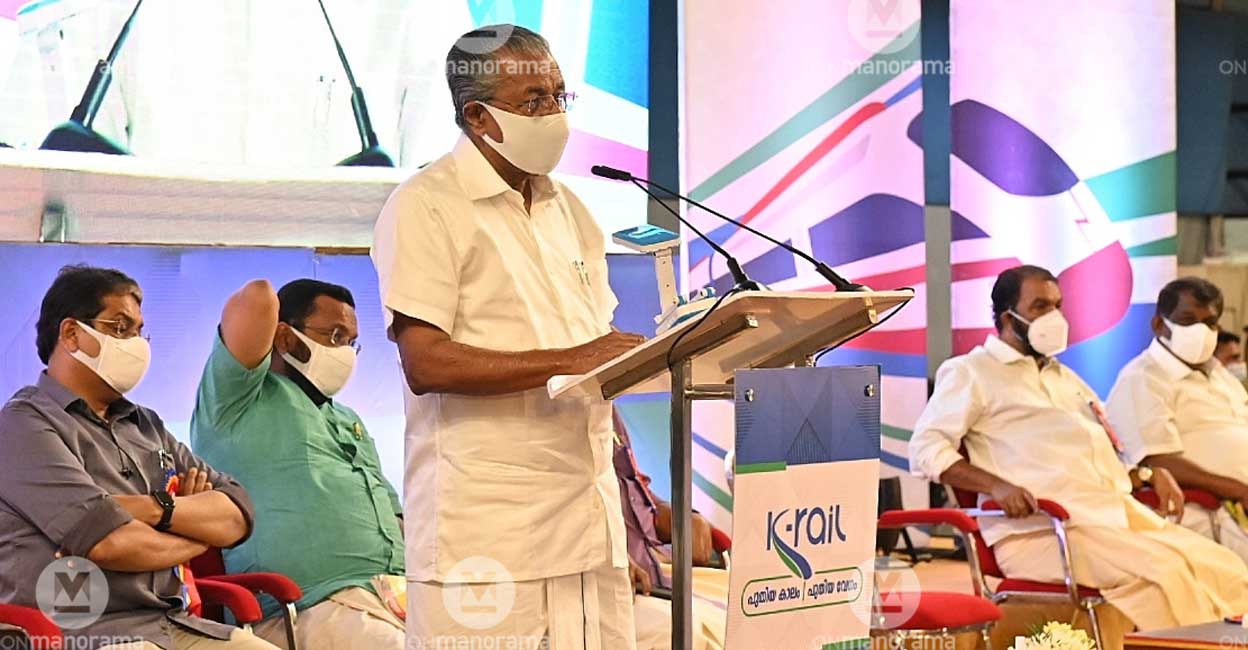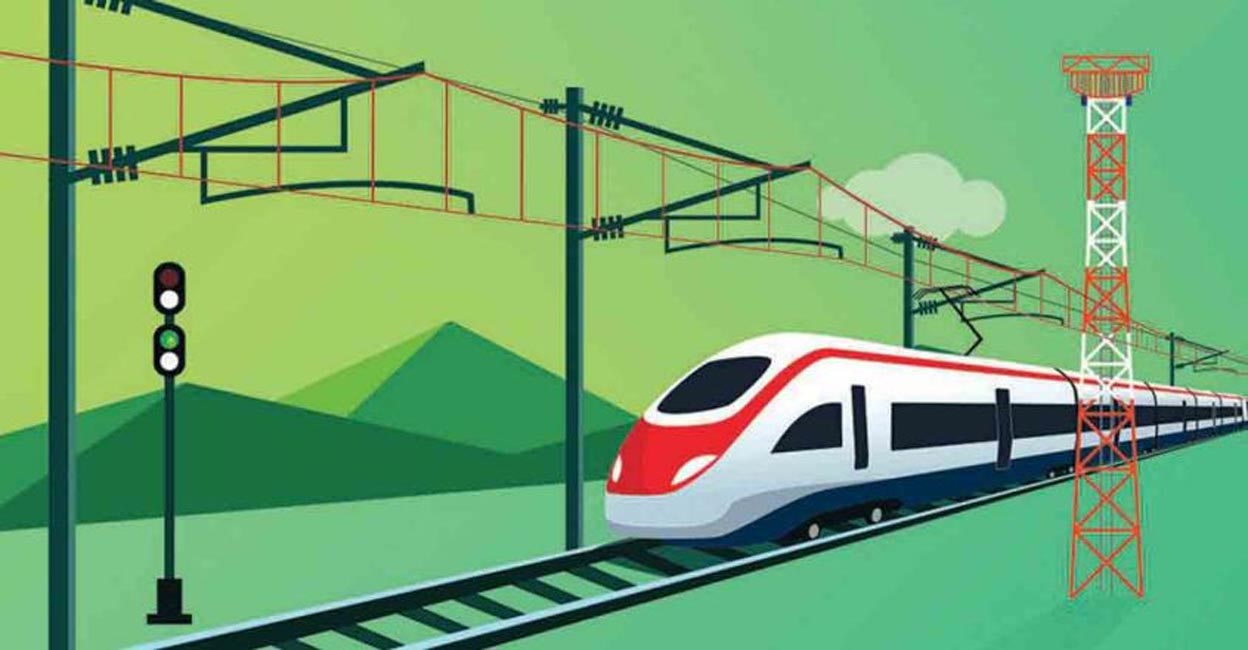Will a near 8-ft high wall rise on either side of SilverLine? CM says no, K-Rail says yes

Mail This Article
The Left Democratic Front (LDF) government in Kerala will have to concede at least one of the major criticisms that have been levelled against the semi high speed rail project, SilverLine.
Despite the detailed project report (DPR) specifically stating that there would be a compound wall on either side of the rail embankment, Chief Minister Pinarayi Vijayan on March 15 categorically told the Assembly during the debate on SilverLine that there would be no such wall. But a couple of hours later, while MLAs were briefed about the technical aspects of the project by Kerala Rail Development Corporation Ltd (K-Rail) officials, it was said that fencing was inevitable for high speed rail projects.

While replying to the debate, the chief minister was highly dismissive of the Opposition charge that compound walls would rise on either side of the rail embankment. "A major issue that has come up is the canard that this would divide Kerala into two," he said. "Of the 532 kms of the rail stretch, 137 kms will come up on viaducts and tunnels. In these areas, therefore it is clear that there would be no hurdles that would prevent the crossing from one side to the other," the chief minister said.
In the remaining areas, for people to cross from one side to the other, overbridges or underpasses would be constructed every 500 metres of the rail stretch. So the propaganda that K-Rail would divide Kerala into two and a wall double the height of man would come up is against facts," the chief minister said.
At this point, Opposition Leader V D Satheesan intervened and pointed out to him the exact page in the DPR (pg 400) where there is the mention of a cement compound wall 2.4 metre (7.87 ft) high. "The DPR has also given pictures of a tall compound wall and it has also said that the walls could be used for advertisements to generate extra revenue," Satheesan said and asked the chief minister: "When the DPR says this, is it right to come to the Assembly and claim that the construction of compound walls was baseless."
"What I said is the real fact," the chief minister said. "Kerala will not be divided into two and walls will not come up in our state as part of this project. There is no need for such a concern," he said.
However, later on the same day, when the K-Rail team explained the technical aspects of the project to MLAs, the chief minister's 'no wall' claim came crashing down.
A clarification about compound walls was the last question posed at the nearly one-and-a-half hour technical session; the UDF legislators boycotted the event. It was CPI's Kongad MLA K Shanthakumari who asked. "It is being said that there would be a compound wall on either side of the rail path for kilometres on end. Please provide a clarification," she said.

"If you want to operate trains at more than 140 km per hour, you will have to fence the railway track. (The proposed speed of SilverLine is 200 km per hour.) It has been done in Delhi. Fencing has been done for the Delhi-Agra semi high speed rail track. Fencing is going on along the Delhi-Mumbai and Delhi-Kolkota semi high speed routes. The fencing mechanism is already existing in India. We are just adopting the same in Kerala. But for people to cross, we will provide a passage every 500 metres," the K-Rail official said.
Evidently, contrary to the assurance given by the chief minister, there would be a compound wall on either side of the SilverLine wherever the rail is constructed on an embankment. The DPR states that 292.73 kms of SilverLine, or nearly 56% of the entire stretch, will be on embankments.
Here is what the DPR says about the need for fencing the SilverLine track. "In view of their long braking distance, it is not possible for a driver to stop trains to avert obstacles within visual range. Therefore, to prevent people and other obstacles from entering the right of way, a high-speed railway system is designed as a completely segregated system with grade-separated crossings."
Grade-separated crossings mean crossings that do not cut through the rail track like in the case of traditional railways but pass either overhead or underneath the SilverLine. Therefore, there will be no level crossings along the SilverLine like in the case of the existing rail network.
Safety is the motive behind the compound wall. The DPR says that the "full length of the proposed corridor is proposed to be installed either with a compound wall of sufficient height or with suitably designed fencing to prevent trespass and consequent damages".

